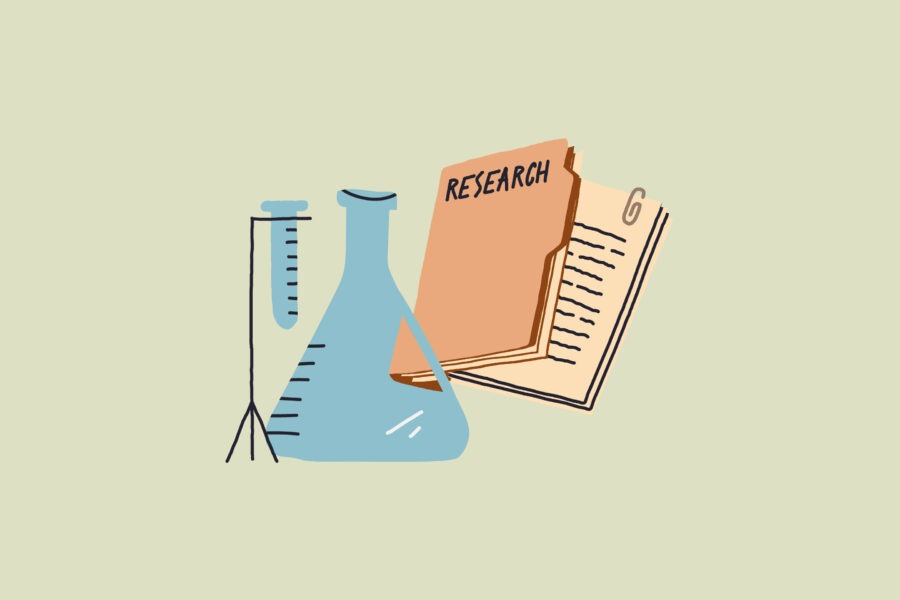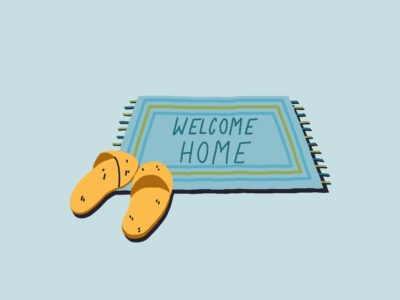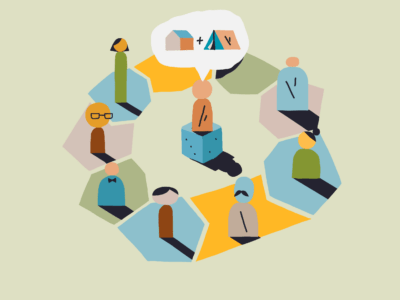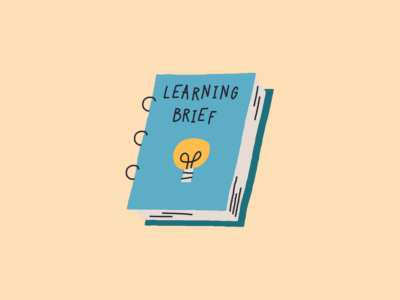How can artificial intelligence be used to increase housing supply, better anticipate community housing needs, forecast costs, and reduce delays in delivering housing assistance? The urgency is clear: skyrocketing housing costs and the visible housing scarcity reflected in encampments and people sleeping in the open. We are at a defining moment as a nation, where bold solutions are required, and new technologies, responsibly applied, could accelerate progress.
Yet of the hundreds of billions of dollars invested globally in AI development, less than one percent has gone to social impact-focused applications such as housing (AI for Impact: Strengthening AI Ecosystems for Social Innovations).
Within housing and homelessness response systems, AI holds both transformational promise and real risks. Early adoption is happening unevenly. In some cases, sensitive information has been uploaded into large language models without adequate security protections. Communities have purchased chatbots marketed as tools to manage client intake or streamline referrals, only to discover the systems could not deliver on those claims. These missteps highlight how quickly the technology is advancing in terms of clear guidance and safeguards. For communities working to end homelessness, the question is whether AI will prove irrelevant, harmful, or harnessed as a powerful enabler of progress.
Informed leadership is needed to guide the responsible use of AI in this field. With our foundations in data and an extensive network of more than 160 communities in Built for Zero, we have stepped up to shape these vital conversations. Our aim is not simply to test new technologies, but to ensure they are applied responsibly, with improved population-level outcomes at the center.
Our Journey with AI
We began experimenting with generative AI through internal pilots of generative AI tools (ChatGPT, Gemini, etc.). Staff tested applications for coaching, analysis, and knowledge management, quickly recognizing their value. These early efforts revealed both excitement for innovation and the importance of clear standards. We asked: How do we use this responsibly? What risks must we anticipate? What frameworks should guide adoption?
We were fortunate to be included in early convenings (2023-2024) of data-focused NGOs and government technology leaders hosted by foundations and AI companies. We were the only organization specifically engaged in homelessness and housing in these meetings, and quickly found widespread interest in the potential of AI to transform outcomes related to homelessness worldwide. Our presence and ability to frame the information sharing, alignment, and policy barriers that AI could address.
Momentum grew with the Bellagio Convening, sponsored by the Rockefeller Foundation in September 2024, which brought together leaders from refugee response, disaster relief, academia, and frontline systems to explore the use of AI in housing. Participants co-designed potentially high-leverage, concrete projects to test, specifically tools to streamline processes, systems to synthesize evidence and forecast risk, and platforms to identify underutilized land and regulatory barriers to expanding housing supply.
This work continued in 2025 as we brought the land use concept into a “17 Rooms” project, a global innovation lab led by the Brookings Institution and the Rockefeller Foundation. That collaboration produced an initiative envisioning a shared, open-data infrastructure to help cities standardize foundational land-use information, thereby accelerating new housing development or unlocking underutilized units. Inspired by the Human Genome Project, it seeks to reconcile fragmented housing data into a clearer, more actionable picture.
At the same time, with partners from Bellagio convening, we piloted an AI tool using natural language to collect data from individuals experiencing homelessness, thereby easing the frontline workload. We also commissioned rapid literature reviews to synthesize what is known and what remains unknown about AI in homelessness response. These reviews identified both risks (predictive errors, generative hallucinations) and opportunities for responsible, human-centered applications.
Next, we are refining the natural language tool through potential field testing with communities and working to advance the Home Genome Project, which will conduct additional research and planning to understand data infrastructure across a network of cities. Together, these efforts aim to reduce frontline burden while equipping local leaders with stronger tools to expand housing supply.
Internally, our team of data scientists, analysts, and engineers is advancing the use of machine learning and data science to help communities better understand system performance, measure progress toward reducing homelessness, and analyze upstream contributors. Our aim is to promote a culture of continuous improvement — through evidence-driven monitoring, barrier identification, and a deeper understanding of the root causes of homelessness and the most effective drivers of reductions.
What We’ve Learned
From convenings, pilots, and research, several themes have emerged:
The Promise: AI’s greatest potential lies in expanding human capacity. It can reduce administrative burdens, allowing staff to spend more time with people and less on paperwork. It can analyze qualitative, narrative data often lost in rigid forms. At a system level, AI can identify housing development barriers and opportunities, pinpoint underutilized housing stock, and highlight inefficiencies in administrative processes, thereby accelerating the adoption of strategic models like Built for Zero. Looking ahead, AI could power early warning systems to help leaders anticipate and respond to emerging housing crises at the household and community level.
The Risks: Generative AI can produce false information, potentially leading to harmful decisions. Some companies overstate their tools’ capacities in human services, threatening the quality and dignity of care. Predictive tools may overpromise without evidence of real-world impact. Without safeguards, vulnerable populations risk being over-surveilled, stigmatized, or facing worse outcomes. These are not reasons to avoid innovation, but clear signals for thoughtful design.
The Gap: While other fields are advancing frameworks for effective AI use, the homelessness and housing sectors are still in the earliest stages of defining responsible practice.
The Consensus: Across convenings and research, there is strong agreement: humans must remain at the center; people using the systems must be at the center of design and deployment; and dignity and transparency must anchor every application.
Community Solutions’ Emerging Strategy
In response to both opportunities and risks, Community Solutions is beginning to explore emerging strategies focused on four priorities that build on our strengths:
- Engage Strategic Partners: Convene funders, policymakers, technologists, community leaders, and those experiencing homelessness to shape the field’s direction and expand the coalition working toward shared goals.
- Convene and Facilitate: Create cross-sector spaces for dialogue, knowledge exchange, and co-design of solutions.
- Scale and Endorse Learning: Disseminate frameworks, toolkits, and campaigns that establish, educate, and establish norms for AI in housing and homelessness systems.
- Engage and Support Communities: Broker pilots, resources, and funding to help communities test AI in practice, with emphasis on capacity building and sustainability.
- Identify and Scale Emerging Tools: Surface powerful new practices and technologies, and mobilize resources to expand their use broadly.
This strategy is grounded in guiding values: human-in-the-loop, dignity, transparency, and curiosity. These principles shape our internal work and will serve as standards for external partnerships.
This vision is urgent, achievable, and full of opportunity. With the right partnerships and resources, AI can accelerate progress toward a future where housing needs are met and homelessness is truly rare and brief.




